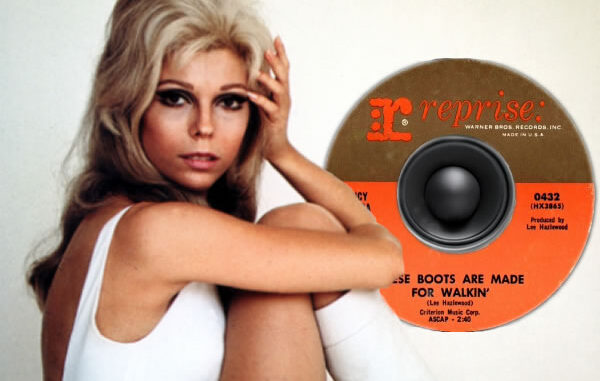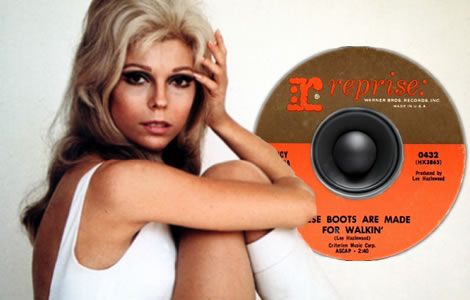
In 1966, Nancy Sinatra’s “These Boots Are Made for Walkin'” strutted onto the music scene, capturing the zeitgeist of a rapidly changing America.

The song, with its confident lyrics and infectious bassline, became an anthem of empowerment, particularly for women. It wasn’t just a hit; it was a cultural phenomenon, embodying the spirit of rebellion and individuality that defined the 1960s.
The Cultural Climate of the 1960s America
The mid-1960s were a period of significant social change in the United States. The country was in the midst of the Civil Rights Movement, with activists fighting for racial equality and justice. The feminist movement was gaining momentum, challenging traditional gender roles and advocating for women’s rights. This was also the era of the Vietnam War, which sparked widespread protest and a growing counterculture movement among the youth.
Against this backdrop, popular culture was experiencing its own revolution. The British Invasion had transformed the music industry, with bands like The Beatles and The Rolling Stones dominating the charts. At the same time, American artists were pushing boundaries in rock, folk, and soul music. Television, too, was reflecting these changes, with shows like “The Ed Sullivan Show” and “The Smothers Brothers Comedy Hour” becoming platforms for cultural expression and political commentary.
Nancy Sinatra’s Rise to Stardom
Nancy Sinatra, born into the entertainment royalty as the daughter of Frank Sinatra, had a lot to prove. Frank Sinatra was a towering figure in the music industry, known for his impeccable voice and charismatic presence. While his name opened doors, it also set high expectations for Nancy. Determined to carve out her own niche, she initially struggled to find her sound and place in the music world.
The Role of Frank Sinatra and Lee Hazlewood
Frank Sinatra’s influence undoubtedly played a role in Nancy’s career. His guidance and connections provided her with opportunities that might have been out of reach for others. However, it was Nancy’s collaboration with producer Lee Hazlewood that truly defined her career.
Hazlewood, known for his unconventional approach to music production, saw potential in Nancy that others had overlooked. He encouraged her to embrace a tougher, more assertive image, which was a stark contrast to the more demure personas typically adopted by female singers of the time. This new image was perfectly encapsulated in “These Boots Are Made for Walkin’.”
Hazlewood wrote the song specifically for Nancy, crafting lyrics that conveyed a message of independence and empowerment. The song’s catchy melody and driving bassline, coupled with Nancy’s sultry yet commanding vocals, created a unique sound that stood out in the crowded music landscape.
The Success of ‘These Boots Are Made for Walkin”
Released in February 1966, “These Boots Are Made for Walkin'” quickly climbed the charts. In the United States, it reached No. 1 on the Billboard Hot 100, and it enjoyed similar success internationally, topping charts in the UK, Canada, and Australia. The song’s popularity was boosted by its memorable music video, which featured Nancy in her iconic go-go boots and mod fashion, further cementing her image as a style icon.
The song’s success was not just due to its catchy tune and bold lyrics. It resonated with a generation that was beginning to challenge traditional norms and assert their independence. For women, in particular, the song became a symbol of empowerment, reflecting the growing feminist movement’s ideals.
Television and Cultural Impact
The impact of “These Boots Are Made for Walkin'” extended beyond the music charts. The song’s success helped Nancy secure appearances on popular television shows, including “The Ed Sullivan Show” and “Hullabaloo.” These performances showcased her talent and style to a broader audience, further boosting her career.
Television in the 1960s was a powerful medium for shaping public opinion and culture. Shows like “The Beverly Hillbillies,” “Gilligan’s Island,” and “Bewitched” were immensely popular, offering a mix of escapism and subtle social commentary. Music programs, in particular, played a crucial role in promoting new artists and songs, and Nancy’s television appearances helped solidify her status as a pop icon.
The Legacy of ‘These Boots Are Made for Walkin”
The enduring appeal of “These Boots Are Made for Walkin'” lies in its timeless message and catchy, innovative sound. Over the decades, the song has been covered by numerous artists and featured in various films, commercials, and television shows. It remains a staple of 1960s pop culture and a testament to Nancy Sinatra’s impact on music and fashion.
Nancy Sinatra’s “These Boots Are Made for Walkin'” is more than just a hit song; it’s a cultural milestone. It encapsulates the spirit of an era defined by social upheaval and the quest for personal freedom. With the help of her father, Frank Sinatra, and the visionary producer Lee Hazlewood, Nancy created a song that not only topped the charts but also left an indelible mark on popular culture.
